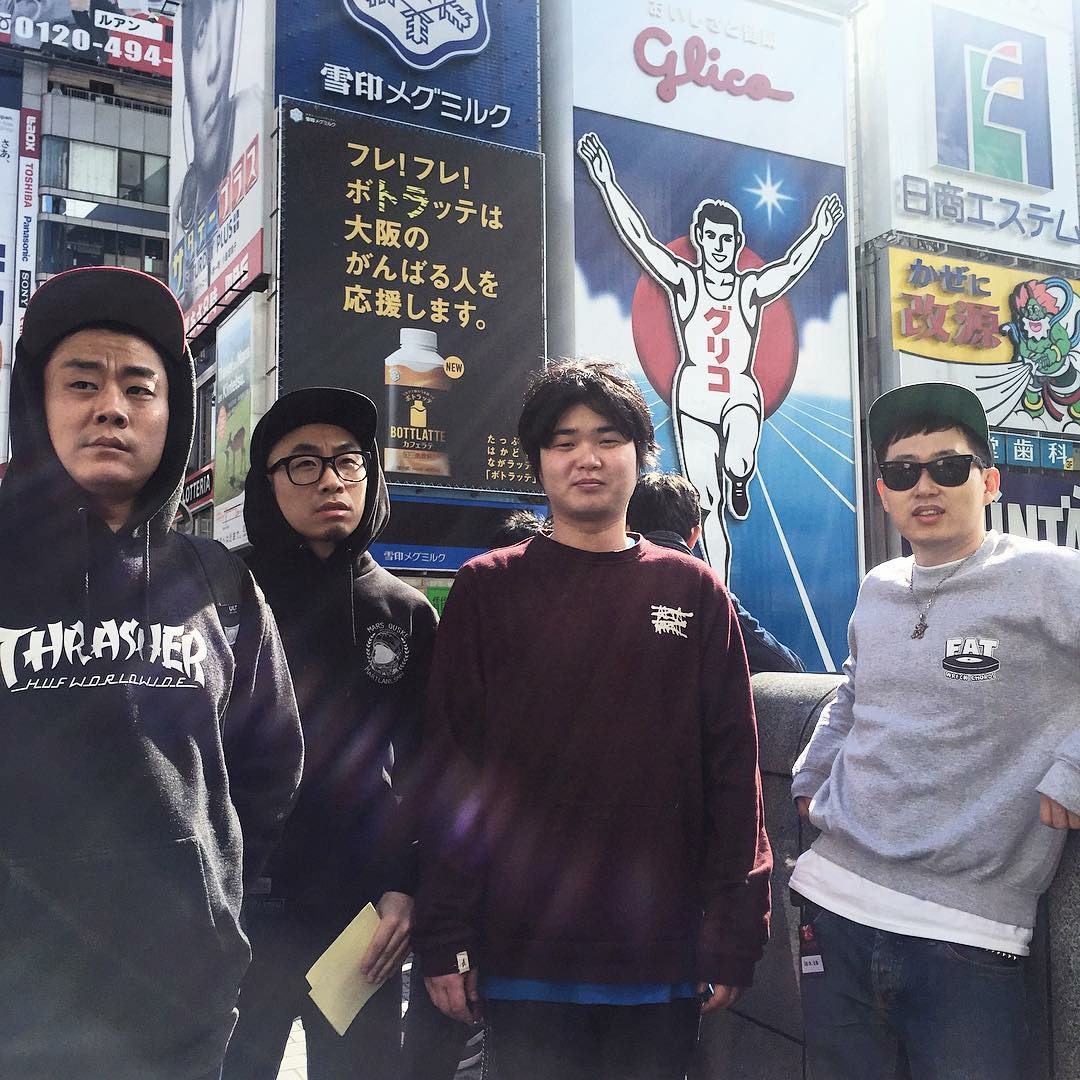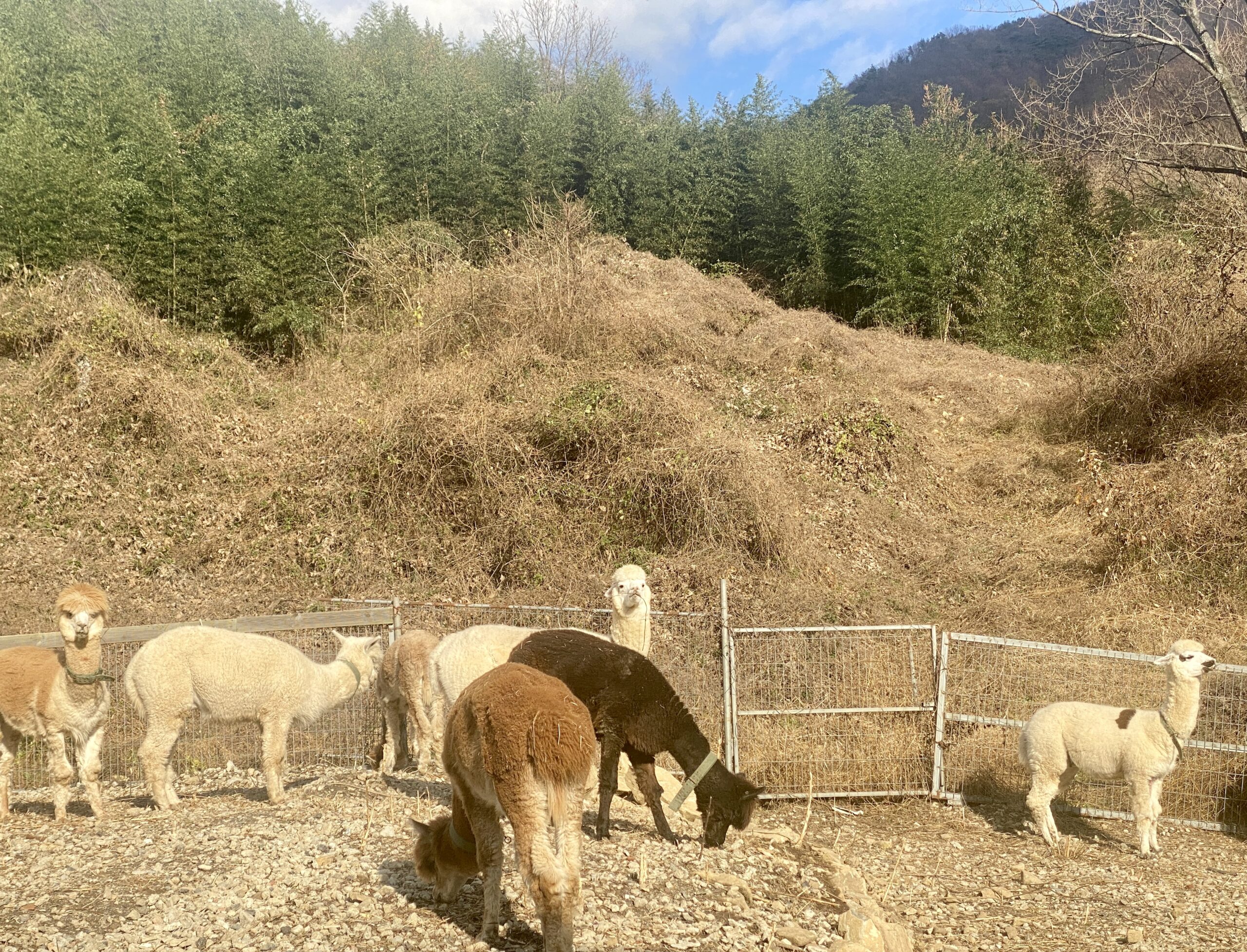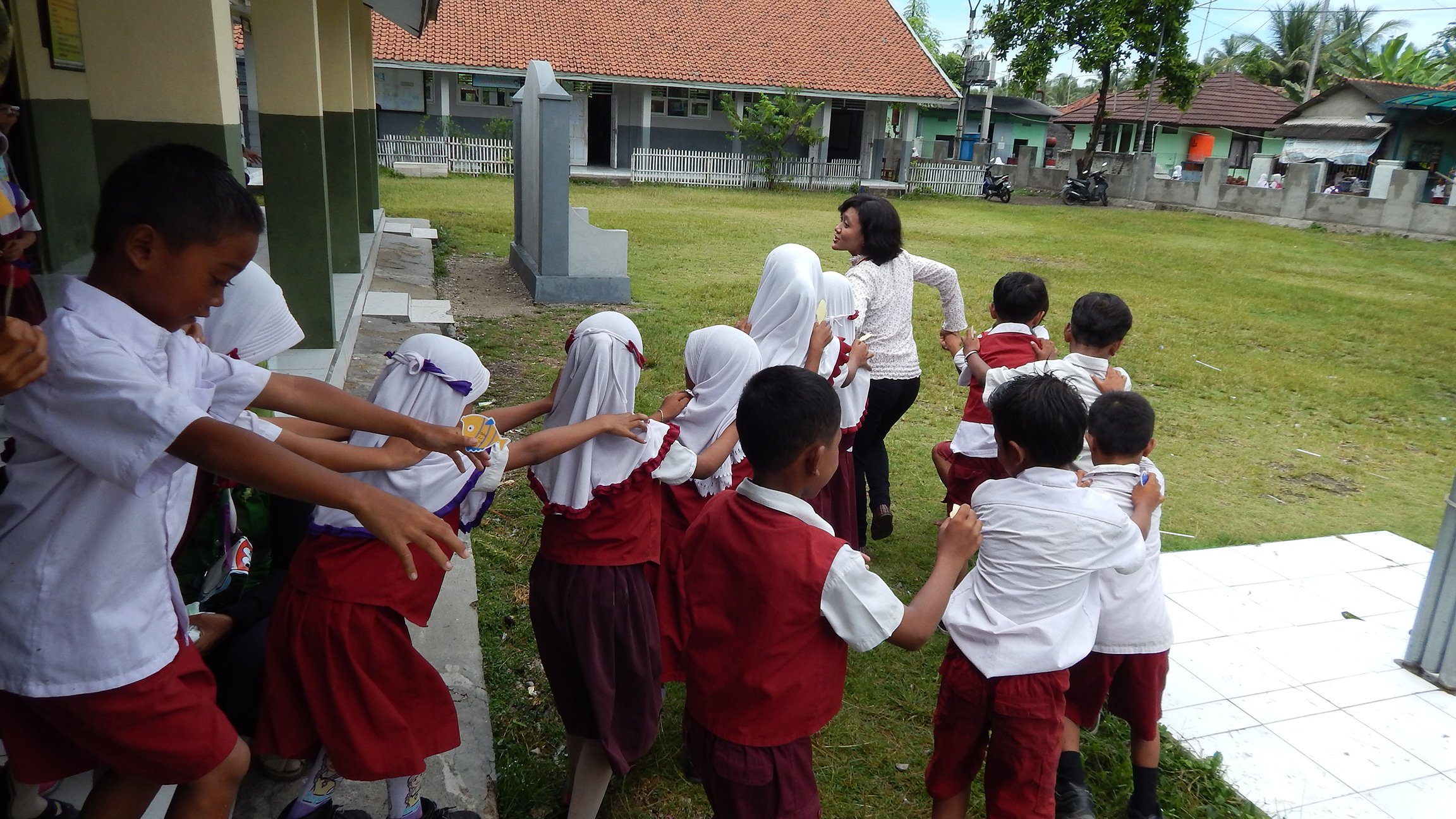Falling in Love with Volunteering
My Experiences in Indonesia
By Emmanuela Sabatini.
The Initial Step
My volunteer life first started in 2015, back when I was working for a company in Indonesia. I decided to join a volunteer-and-travel program offered by one of the many non-government organizations in Jakarta. All volunteers were invited to Rote Island, the southernmost island in Indonesia. It was a good opportunity to participate in positive activities while traveling inside the country. I served together with local residents and other volunteers for two days, and together we educated students by sharing our professions and experiences. We even had time to hear from the students and discuss their hobbies and dreams.
Volunteering is something I decided that I wanted to keep doing. Once you have done it once, you realize how satisfying it is. After that first time, I became active as a volunteer in an education program for elementary and junior high school students, together with the Indonesian Volunteer Community in Indonesia until 2018.
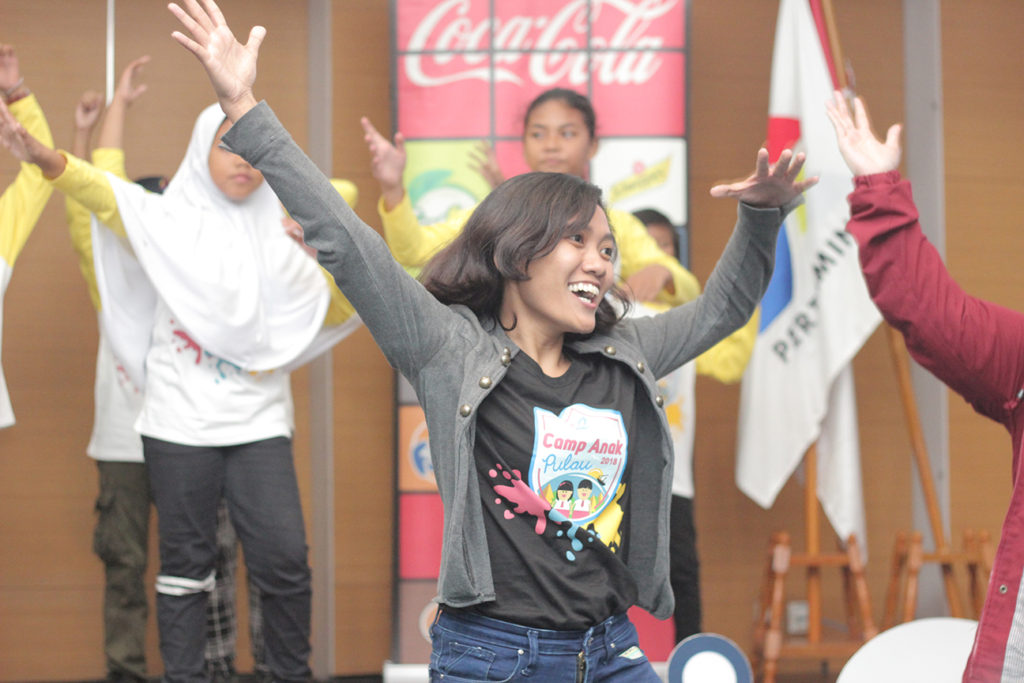
Fun Fact: Indonesia is the world’s largest island country with 1.9 million square kilometers. The country also holds the fourth largest human population in the world, showcasing a wide variety of cultures within its borders.
The Papua Story: Inequity in Education
After Rote Island, I visited several places in Indonesia to join other volunteer-and-travel programs, specifically in Toraja on Sulawesi Island, Sumbawa Island, and Kaimana City on Papua Island. Visiting Papua, the easternmost island in Indonesia, had been on my dream list in 2017. I had previously never thought that the flight to Papua would be as expensive as flying to South Korea. It took about six hours with a transfer. After arriving in Kaimana City, the volunteers needed to take a boat that took two hours to reach the school. The school itself was not located in the city, but instead was in the hills of a nearby island. We rested at the teacher’s house and had a class the next morning.
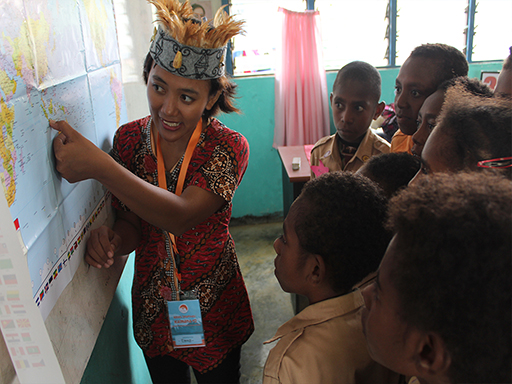
We made our way to the school on that rainy Saturday morning in October 2017. Our volunteer activities started with introductions among volunteers, students, and teachers at the schoolyard after the rain had stopped. We stretched together by performing the “Baby Shark” song, as we did in Kaimana Bay, famous for its high shark population.
During the activities, I realized that the students had come with uniforms on, but not all of them had schoolbags or shoes. The teacher told me later that not all the students had shoes, so students were not required to wear any. Other students also said that they only had one pair of shoes, and that the shoes would be dirty if they wore them during the rainy season. So, they preferred to come without any footwear.
I worked as a Korean-Indonesian interpreter at that time and tried to invite the students around the world by bringing in a world map and showcasing how the hanbok (Korean traditional dress) is worn to the class. The students, who were in the fifth grade in elementary school, only knew a little bit about Indonesia, so Korea was an even less-known topic. Still, I tried to let them know a little bit about Korea and its language, and give them the chance to put on a simple hanbok. One girl student tried on a hanbok and modeled it in front of class. Not only the girl students but all the students there thought that it was a wedding dress! Because of their remote location, the students did not have many experiences. I felt sad. As a developing country, I realized that Indonesia still fights for equality in education, as mentioned in one of the UN sustainable development goals (SGDs). In the future, I hope there will be lots of opportunities for these students to encounter and explore new things.
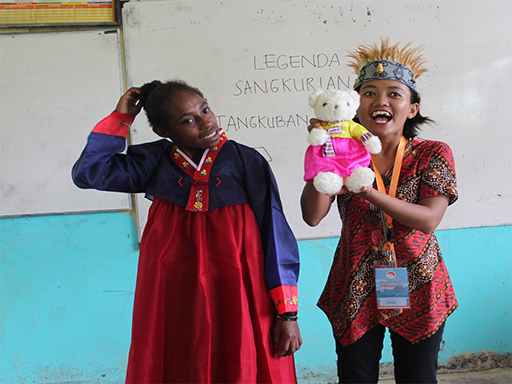
Camp in the Capital City
Besides volunteer work on the islands in Indonesia, I have been a regular volunteer with the Indonesia Volunteer Community based in Jakarta since 2015, as well as being a part of the External Affairs Team. During my time volunteering, my group visited islands near Jakarta every year, and we volunteered with students and residents based on their circumstances. For example, students on Panjang Island tend to be active because of the hot weather, so we conducted more physical activities with them, involving regulations and achievements to help improve their discipline. Panggang Island has anchovies as a special product, so we gathered residents to make anchovy crackers, letting them know how to package their product so that it could later be sold in Jakarta.

After they learned how to better develop their capacities, we invited student representatives and teachers to the capital city for a three-day camp at the beginning of 2018. Seventeen students and 17 teachers were invited to visit and experience this program. Together, we visited Jakarta’s landmarks, the Indonesia Airplane Training Center to experience some flight simulation, and the history museum, and enjoyed a farming experience with missions to accomplish at each. While the students were exploring the history museum, the teachers had a workshop on creative teaching.
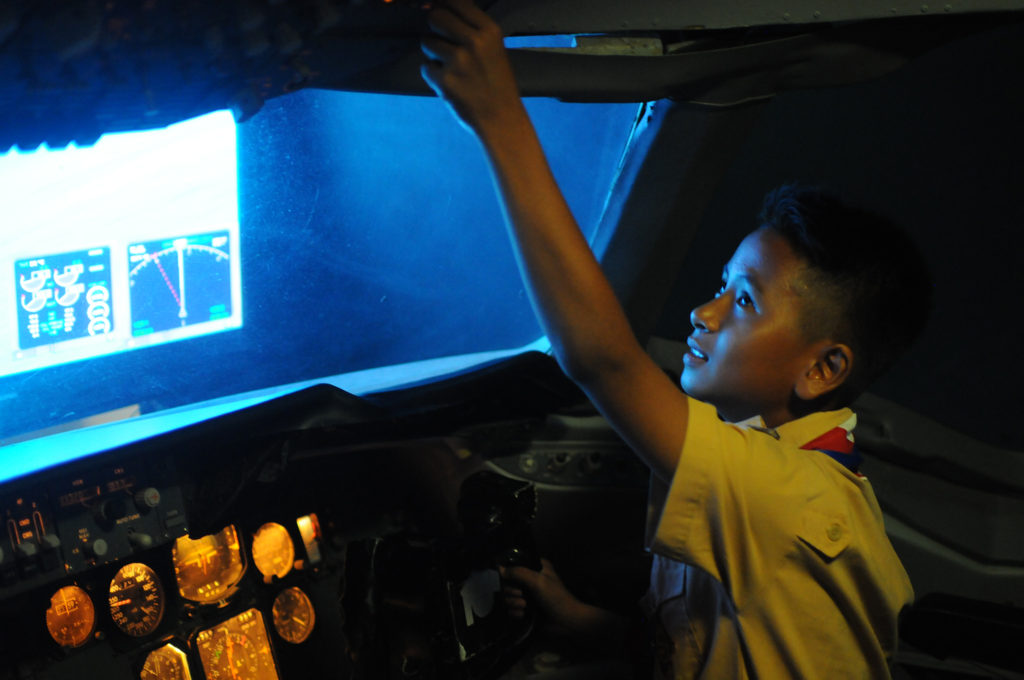
The volunteer activities that I participated in focused only on elementary school education and children of that age range. Through volunteering, I learned how to teach and even gained inspiration from other volunteers who shared even more experiences and remained very humble. This kind of volunteering showed me how big Indonesia is and the nation’s educational situation. I also gained new friends and received an opportunity for worthwhile self-introspection. I got to know my capacities and learned to dare to dream for contributing to Indonesia no matter where I am in the world.
Photographs by Emmanuela Sabatini and the Indonesian Volunteer Community (www.jelajahpulauid.org).
The Author
Emmanuela Sabatini is originally from Jakarta, Indonesia. She did an internship at the Gwangju International Center. She likes to travel, dance, and do volunteer activities. You can follow her life journey at www.emmasabatini.com. Instagram: @emmasabatini

